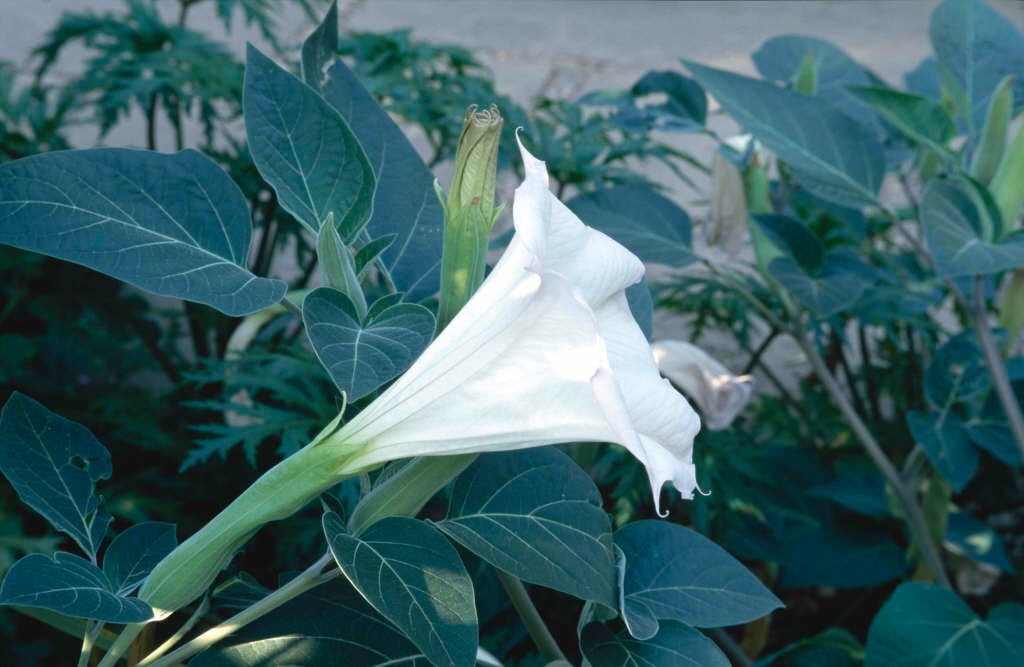Datura innoxia
downy thorn apple
A bushy, upright annual with large ovate leaves with wavy margins, and funnel-shaped lavender or pinkish flowers to 20cm long, followed by spiny fruits 5cm long

Size
Ultimate height
0.5–1 metresTime to ultimate height
1 yearUltimate spread
0.5–1 metresGrowing conditions
Moisture
Moist but well–drainedpH
Acid, Alkaline, NeutralColour & scent
| Stem | Flower | Foliage | Fruit | |
| Spring | Green | |||
|---|---|---|---|---|
| Summer | Purple | Green | ||
| Autumn | Green | |||
| Winter |
Position
- Full sun
Aspect
West–facing or South–facing or East–facing
Exposure
Sheltered Hardiness
H3Botanical details
- Family
- Solanaceae
- Native to GB / Ireland
- No
- Foliage
- Deciduous
- Habit
- Bushy
- Potentially harmful
- TOXIC if eaten, skin irritant, avoid eye contact. Wear gloves and other protective equipment when handling TOXIC to pets - see the HTA guide to potentially harmful plants for further information and useful contact numbers
- Genus
Datura can be large annuals or short-lived perennials, with simple, coarsely toothed leaves and often fragrant, funnel-shaped white or purple flowers followed by spiny seed-capsules
- Name status
Correct
How to grow
Cultivation
Grow in fertile, moisture retentive, well-drained soil with full sun
Propagation
Propagate by seed sown in situ in spring or earlier under glass and planted out after the danger of frost
Suggested planting locations and garden types
- Coastal
- Cottage and informal garden
- City and courtyard gardens
- Flower borders and beds
Pruning
No pruning required
Pests
Generally pest-free
Diseases
May be susceptible to a virus
Get involved
The Royal Horticultural Society is the UK’s leading gardening charity. We aim to enrich everyone’s life through plants, and make the UK a greener and more beautiful place.